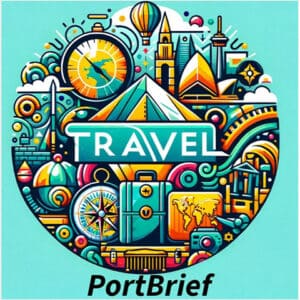On October 1, 1971, Walt Disney World Resort opened in Florida, launching a legacy that reshaped entertainment history. This Disney World 1971 debut featured Magic Kingdom Park, the Contemporary Resort, and Polynesian Village Resort, promising adventures far beyond California’s Disneyland.
The walt disney world 1971 vision expanded over 27,000 acres, purchased at $180 per acre in the 1960s. By 1971, the resort’s grand opening included a 1,076-member marching band and 1,500-voice choir, celebrating a dream born from Walt Disney’s imagination.
Today, disney world history spans four parks, over 20 resorts, and innovations like the FastPass system. From River Country (1976’s first U.S. water park) to the $100M Expedition Everest (2006), the resort evolved while honoring its roots.
Key Takeaways
- Walt Disney World 1971 launched with three iconic resorts and Magic Kingdom Park’s original attractions like the Haunted Mansion.
- Over 27,000 acres were secured at $180 per acre, later becoming a $80,000-per-acre landmark.
- The 50th anniversary (2021–2023) introduced “Harmonious” and EARidescent décor, honoring the resort’s roots while innovating.
- Disney World history includes milestones like Epcot (1982), 9 pavilions) and Animal Kingdom (1998, 200 species).
- Legacy attractions like the Twilight Zone Tower of Terror (1994) and Star Wars: Galactic Starcruiser (2022) reflect its enduring evolution.
The Birth of Disney World: A Dream Realized
On October 1, 1971, the opening of disney world marked the culmination of decades of vision and effort. This iconic destination’s disney world history began not with a splash of magic but with meticulous planning. From humble swampland to a global icon, the journey reveals fascinating disney world facts about ambition and perseverance.
The Visionary: Walt Disney’s Legacy
Walt Disney’s dream for a Florida retreat emerged after Disneyland’s early growth challenges. To avoid California’s land constraints, he secretly bought 27,000+ acres using dummy companies like Retlaw Enterprises. By 1964, 28,000 acres were secured for under $5.5 million—a strategic move that later defied skyrocketing land costs. His 1966 passing left Roy Disney to fulfill Walt’s blueprint, vowing,
“We will carry forward the ideas he had for the future.”
Planning and Construction Milestones
- Construction began April 1969, employing 9,000 workers
- Initial cost: $400 million
- Opened with one park (Magic Kingdom), two hotels, and two golf courses
Despite challenges, the project forged ahead, laying groundwork for what would become a 40-square-mile empire.
The Grand Opening Day
The opening day welcomed 10,000 guests, but the true celebration came on October 25, 1971. Roy Disney dedicated the resort before a 5,000-strong parade and a 1,076-member marching band. This disney world facts milestone launched a legacy that would see 100 million visitors by 1979 and a 50th anniversary in 2021.
Magic Kingdom: The Heart of Disney World in 1971
TheDisney World Magic Kingdomstood as the crown jewel of the 1971 opening, blending whimsy and innovation. Visitors stepped into themed lands like Adventureland, Fantasyland, and Tomorrowland, each crafted to immerse guests in story-driven environments. OriginalDisney World attractionslike theHaunted MansionandMad Tea Partycaptivated crowds with cutting-edge technology.
Opening day in 1971 brought jaw-dropping sights. The Jungle Cruise guided guests through exotic dioramas, while It’s a Small World showcased global cultures through music and puppetry. The Walt Disney World Railroad circled the park, offering scenic views. These Disney World attractions remain iconic, though some, like Cinderella’s Golden Carousel with 90 carved horses, still enchant today.
Architectural details like Cinderella Castle’s turrets and Main Street’s vintage storefronts set the tone. The park’s curb appeal reflected Walt Disney’s vision of timeless wonder. Even the Disney World 1971 grand opening parade featured a 1,500-voice choir singing “When You Wish Upon a Star,” a moment etched in history.
From the Disney World Magic Kingdom’s debut, every detail—from costumed characters to the Snow White’s Scary Adventures—aimed to transport guests into a magical realm. Though decades have passed, the 1971 foundations still shape the park’s magic.
Epcot: Not Yet a Reality in 1971
When Walt Disney World opened in 1971, the disney world history lacked one of its most ambitious ideas: EPCOT. Walt’s original plan envisioned a futuristic city, not a theme park. This concept, outlined in the walt disney world 1971 blueprints, aimed to revolutionize urban living through technology and innovation.
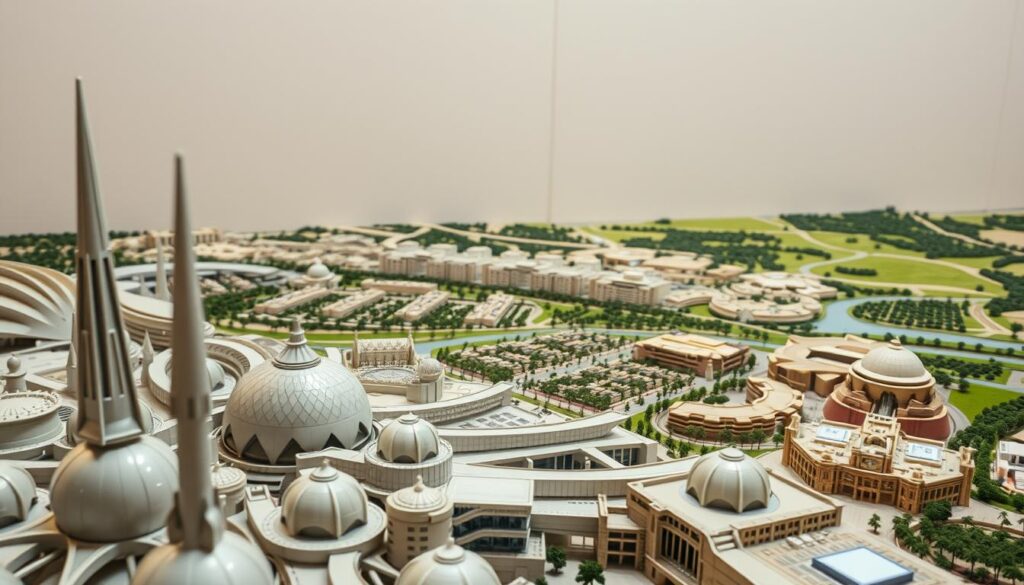
Conceptualizing the Future
Walt’s disney world facts included acquiring 27,433 acres—twice Manhattan’s size—for his utopian city. Key features included:
- A population of 20,000 residents in mixed-density housing
- A 30-story Cosmopolitan Hotel as the city’s centerpiece
- An enclosed downtown with climate control and pedestrian-only zones
The Role of Technology and Innovation
The city’s design showcased cutting-edge ideas:
| Concept | Details |
|---|---|
| Transportation | Monorail and PeopleMover systems for seamless transit |
| Environmental Design | Rotating solar panels and pollution-free zones |
| Urban Planning | Modular buildings for easy upgrades |
Despite its visionary scope, Walt’s death in 1966 shifted priorities. The board opted for a theme park instead, opening EPCOT Center in 1982. Today’s park retains traces of the original vision through tech exhibits and global pavilions, preserving a piece of disney world history for future generations.
The Unique Floridian Charm of Disney World
When Walt Disney first spotted Orlando from his plane in 1960s, the Disney World 1971 vision took root. The 27,000-acre site blended Florida’s natural beauty with imaginative design, turning swamps into attractions. Opened on October 1, 1971, the park’s layout prioritized native ecosystems, preserving lakes like Bay Lake and Seven Seas Lagoon as central features.
Disney World facts reveal how architecture mirrored the region’s climate. Resorts like the Polynesian Village used open-air designs and lush landscaping to embrace subtropical weather. Waterways weren’t just scenic—they solved engineering hurdles. Canals and lagoons managed flooding while adding aesthetic charm, a hallmark of early Disney World history.
- Over 30% of the original property remained undeveloped to preserve wetlands.
- Architects used cypress trees and Spanish moss to highlight Florida’s rustic beauty.
- Water features like the Contemporary Resort’s monorail track reflected the state’s love for innovation and nature.
Building on swampland demanded creativity. Engineers diverted rivers and stabilized soil, transforming marshes into stable foundations. The result? A park where live oaks shaded Main Street and magnolia groves framed Fantasyland. This harmony between wilderness and whimsy remains a Disney World 1971 legacy.
Even today, guests stroll paths lined with Florida’s native palms and pines—a reminder of how nature shaped the park’s identity from day one.
The Original Disney World Resort Hotels
When walt disney world 1971 launched, its hotels redefined vacation experiences. These resorts blended storytelling with comfort, becoming enduring disney world attractions. Their 50-year journey includes milestones like the 2021 disney world 50th anniversary, celebrating their timeless charm.
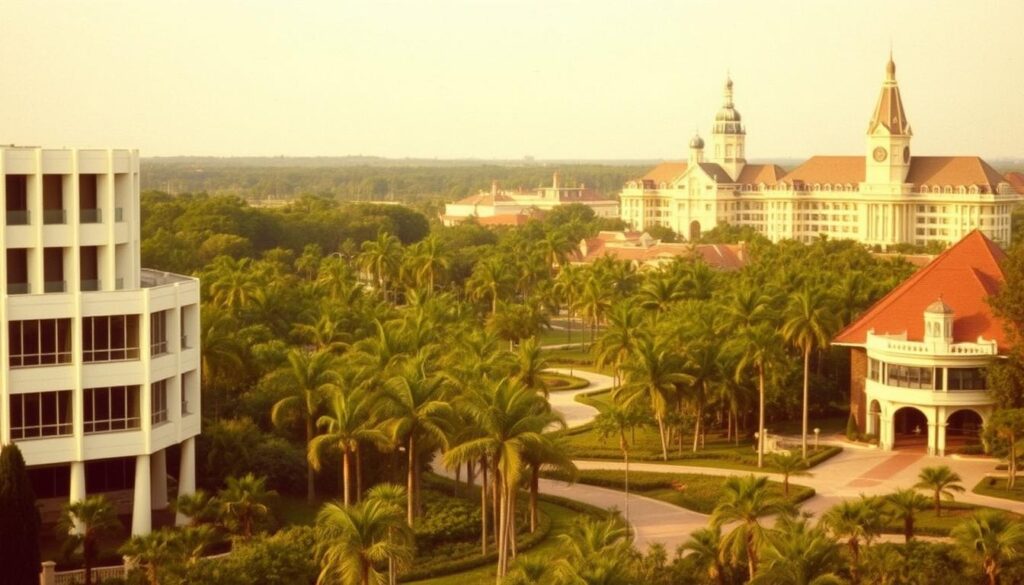
Opened alongside Magic Kingdom, this hotel’s A-frame design featured a monorail running through its Grand Canyon Concourse. A standout was Mary Blair’s vibrant mural, still showcased today. Construction used prefabricated sections lifted by cranes for rapid assembly.
- Futuristic architecture with monorail integration
- Artwork by Disney legend Mary Blair
- Completed using innovative building techniques
Themed to South Pacific islands, this resort’s eight longhouse-style buildings offered tropical escapes. Guests dined at the tropical Tiki Room and explored lush gardens. Renamed in 1985, it remains a cultural staple.
A nature-focused option, this campground offered rustic cabins and campfire programs. Opened a month after the others, it highlighted Disney’s commitment to diverse lodging choices. Activities like horseback riding added to its appeal.
A nature-focused option, this campground offered rustic cabins and campfire programs. Opened a month after the others, it highlighted Disney’s commitment to diverse lodging choices. Activities like horseback riding added to its appeal.
| Hotel | Theme | Features | Year Opened |
|---|---|---|---|
| Contemporary Resort | Futuristic | Monorail access, Mary Blair mural | 1971 |
| Polynesian Village Resort | Polynesian | Eight longhouses, tropical dining | 1971 |
| Fort Wilderness | Rustic camping | Cabins, campgrounds, nature trails | 1971 |
These pioneers of themed lodging continue to inspire modern resorts. Their 50-year journey reflects Disney’s commitment to innovation since the resort’s 1971 debut.
Transportation Innovations of 1971
Disney World facts often highlight its visionary transportation, starting with the 1971 debut of its monorail. When walt disney world 1971 first opened, this sleek system became a symbol of its futuristic vision. Designed to move guests between the Magic Kingdom, Contemporary Resort, and Polynesian Village, the monorail’s electric engines and elevated tracks set new standards for theme park travel.
Monorail: A Ride Itself
Part of disney world history, the monorail’s 1971 launch connected three key locations across the 25,000-acre property. Early trains carried 200+ passengers per trip, powered entirely by electricity. Over time, updates like the 1989 Mark VI model boosted capacity by 30%, now shuttling 16 million riders yearly.
- First Western Hemisphere monorail in daily service debuted at Disneyland (1959), inspiring Walt’s Florida vision
- Original 1971 fleet had 10 trains; expanded to 12 by 1977
- Modern trains now feature LED lighting synced with park themes for 50th-anniversary celebrations
Buses and Boats: Themed Travel
While the monorail stole headlines, buses and ferry boats completed the transport network. Brightly painted shuttles linked outlying resorts, while vintage-style boats glided across Seven Seas Lagoon. These vessels echoed the parks’ tropical themes, making even commutes part of the magic.
From its 1971 launch, Disney’s system proved that transportation could be both practical and entertainment. Today, these innovations remain cornerstones of the resort’s enduring appeal.
The Entertainment Experience in Disney World
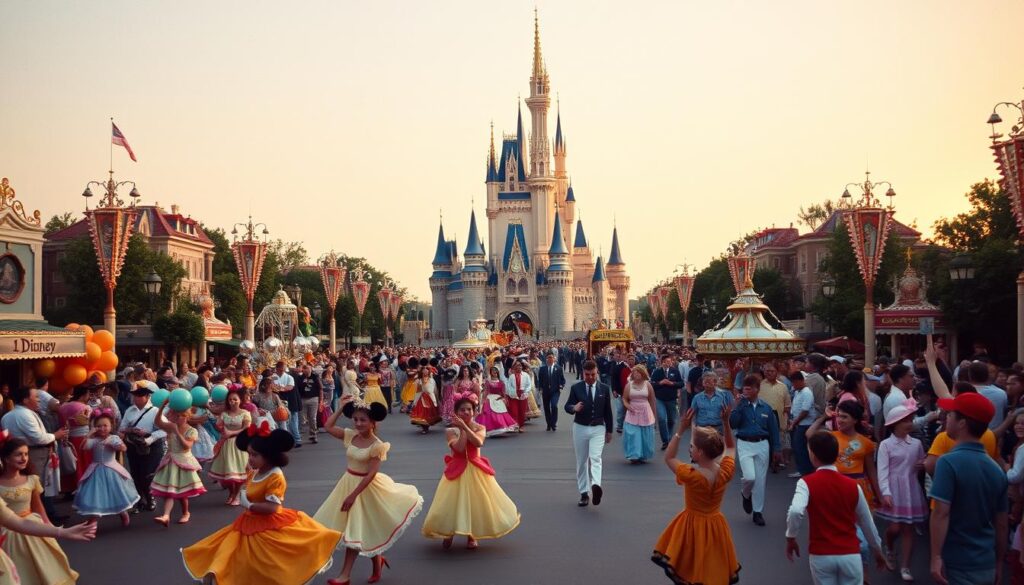
In disney world 1971, entertainment was as vital as the attractions. Parades like the Grand Opening Spectacular, featuring over 1,000 Florida high school band members, became legends. These shows turned Main Street U.S.A. into a stage, blending music, floats, and characters into a daily spectacle.
Parades and Live Shows
| Show | Details |
|---|---|
| Grand Opening Parade | 1,000+ performers and floats, including Disney’s most iconic characters. |
| “it’s a small world” Show | An indoor musical journey with animatronic figures and global music. |
Live shows like “it’s a small world” offered respite between rides, immersing guests in storytelling. Performances were designed to keep families engaged all day, a blueprint for modern theme park design.
Character Meet-and-Greets
In 1971, encounters with Mickey or Snow White were unplanned surprises. Characters wandered the park, creating organic moments of joy. This approach contrasted with today’s structured meet-and-greets, but it made visits feel personal and magical.
These elements cemented disney world magic kingdom as a place where every moment counted. From parades to character interactions, the park’s entertainment legacy shaped the very idea of immersive theme park experiences. The 1971 vision still echoes in how Disney World blends rides and live entertainment into a unified story.
Dining Options: A Taste of Disney in 1971
In 1971, Disney World’s culinary offerings set a new standard for theme park dining. Today, disney world 50th anniversary celebrations highlight modern innovations like Steakhouse 71, but the original menu choices were equally groundbreaking. From elegant sit-down restaurants to quick bites, every meal was part of the magic.
Signature Restaurants and Their Dishes
Iconic spots like the Grand Canyon Terrace at the Contemporary Resort served dishes like $2.25 Oysters Casino, blending luxury with storytelling. The disney world magic kingdom’s King Stefan’s Banquet Hall (later Cinderella’s Royal Table) offered royal-themed meals. These restaurants turned dining into an adventure.
| Restaurant | Year | Location | Signature Dish |
|---|---|---|---|
| Grand Canyon Terrace | 1971 | Contemporary Resort | Oysters Casino, Chateaubriand |
| Cinderella’s Banquet Hall | 1971 | Magic Kingdom | Character breakfast |
| Polynesian Village | 1971 | Polynesian Resort | Luau-inspired cuisine |
Snack Stands and Quick Bites
- disney world facts reveal the Dock Inn’s midnight hours and the Grand Canyon Concourse’s 24/7 service.
- Snack stands like the Polynesian’s Tiki Bar offered tropical treats, while the Magic Kingdom’s quick-service spots sold classic items like popcorn and ice cream.
Today, the 2021 disney world 50th anniversary added Steakhouse 71, featuring dishes like the Steakhouse 71 Feast. This modern addition honors Walt’s vision while adapting to guest preferences. From its dry beginnings to today’s diverse options, Disney’s dining evolution continues to delight.
The Demographics of Early Visitors
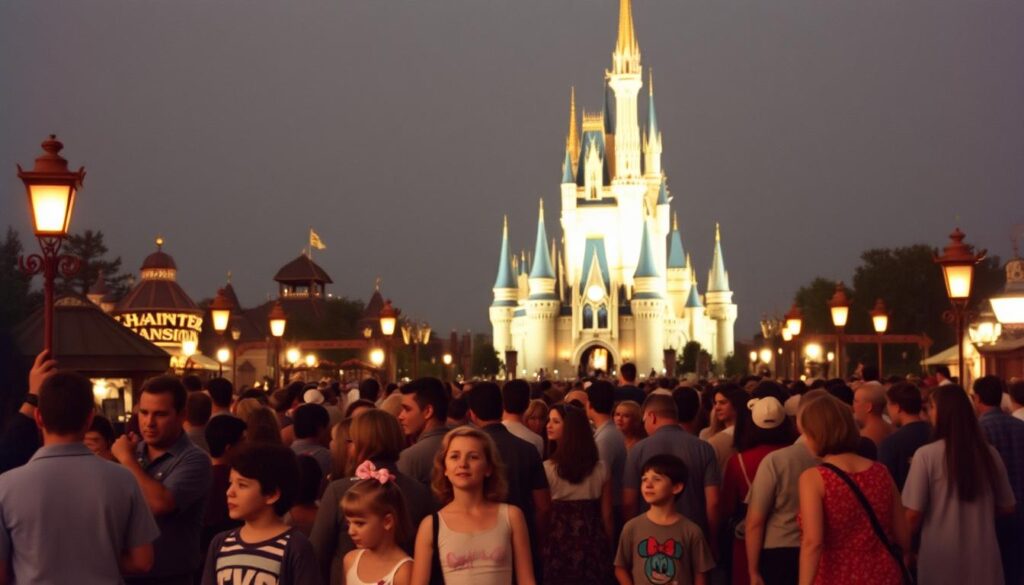
When Disney World opened in 1971, its family-focused appeal drew visitors eager to experience a groundbreaking entertainment model. disney world tickets 1971 required guests to buy a base entry pass and additional attraction tickets (A–E) based on ride popularity. This unique system reflected Disney’s vision to balance affordability and choice for multi-generational travelers.
| disney world facts | 1971 Data |
|---|---|
| Opening Day Visitors | 10,422 |
| Year-End Visitors | ~400,000 |
| Day Ticket Price | $3.50 |
| Attractions Open | 26 |
Family-Focused Experiences
Families formed the core of Disney World’s first crowds. The park’s design prioritized shared enjoyment, with attractions like Peter Pan’s Flight and 20,000 Leagues appealing to both kids and adults. Ticket tiers A–E let families budget their experiences, with disney world history showing this system stayed until 1982.
The Influence of Pop Culture
Disney World’s launch aligned with 1970s trends like rising car travel and leisure time. Its blend of nostalgia and futurism mirrored the era’s cultural mix of Star Wars mania and space race optimism. By 1971, the park became a symbol of American family travel, shaping later generations’ vacation choices.
Changes Over the Decades: The Evolution of Disney World
Since its opening of disney world in 1971, the resort has grown into a global icon. The disney world 50th anniversary in 2021 marked a milestone, blending nostalgia with innovation through disney world history and new experiences. From its humble beginnings to today’s sprawling complex, this journey showcases how Disney balances tradition with progress.
| Year | Event | Impact |
|---|---|---|
| 1971 | Original Magic Kingdom opens | Foundation for future expansions |
| 1982 | EPCOT Center debuts | Showcased futuristic themes and global culture |
| 1998 | Disney’s Animal Kingdom opens | Added conservation-focused attractions |
| 2021 | 50th anniversary celebration begins | 18-month event with EARidescent décor and new shows |
- disney world history highlights milestones like the 1994 addition of Disney’s Hollywood Studios and 2001’s Animal Kingdom Lodge.
- Technological leaps include MagicBands (2013) and mobile ordering apps.
Original attractions like Pirates of disney world history have stayed popular, while Fantasyland’s 2012 expansion doubled its size. Even as new lands like Star Wars: Galaxy’s Edge (2019) emerged, Disney honors its roots. The disney world 50th anniversary reminds visitors that magic evolves but never fades.
The Lasting Legacy of Disney World
Since its opening in 1971, Disney World has evolved into a global symbol of imagination and innovation. The 50th anniversary in 2021 celebrated its enduring magic with “EARidescence,” a term capturing the shimmering updates to Cinderella Castle and new disney world attractions. This milestone reflects a legacy built on the opening of disney world as a bold vision that redefined entertainment.
Impact on Theme Parks Worldwide
Disney World’s 1971 debut set new standards for park design, guest service, and storytelling. Its hub-and-spoke layout inspired global attractions, while its expansion—from Epcot’s 1982 debut to the 2019 solar farm—showcases adaptability. Today, its influence extends beyond rides, shaping how destinations balance sustainability and fantasy. The resort’s 2020 pandemic closure and phased reopening in 2021 highlighted its role as both a cultural icon and economic engine.
A Cultural Touchstone for Generations
From its 1971 roots to the 50th anniversary’s “The World’s Most Magical Celebration,” Disney World remains a shared cultural experience. Generations have grown up with its evolving attractions, from Star Wars: Galactic Starcruiser to New Fantasyland. The 2021 anniversary’s enhancements, like Mickey & Minnie’s Runaway Railway, prove its ability to stay relevant. Through milestones like the 1996 25th anniversary and ongoing expansions, Disney World continues to inspire wonder, proving its magic transcends time.
